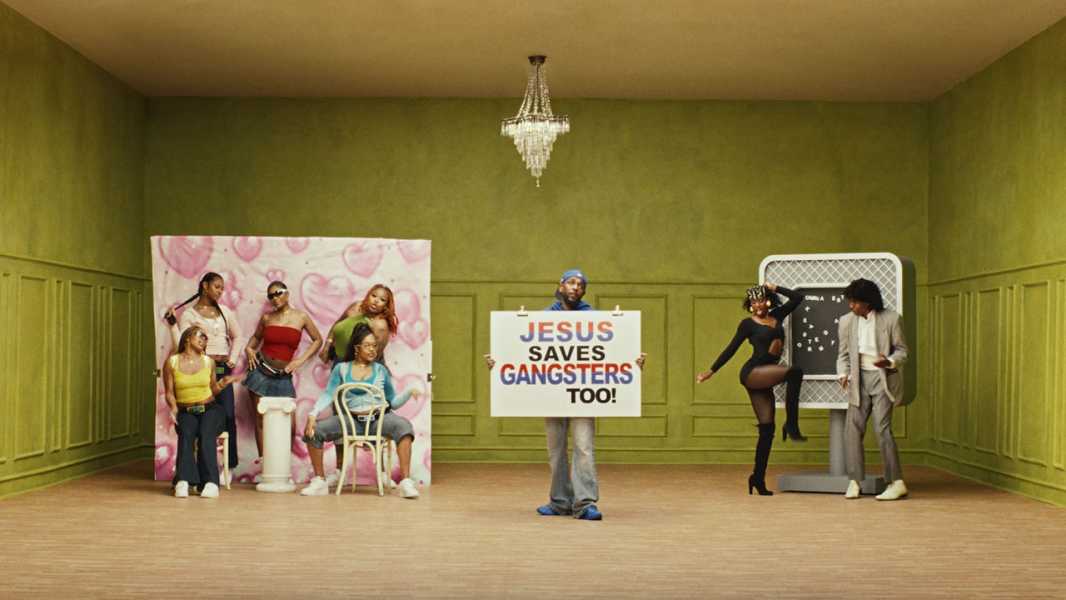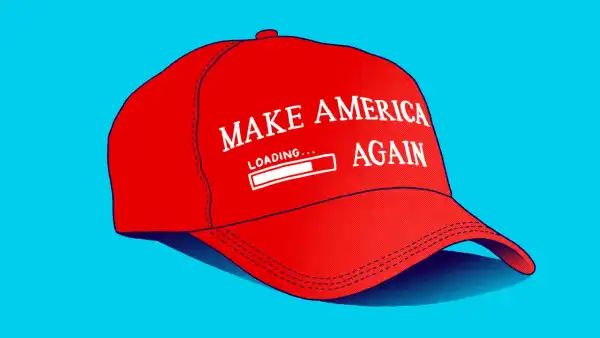
Save this storySave this storySave this storySave this story
The film “Paid in Full,” from 2002, is a fictionalized retelling of the brief but titanic reign of three real-life New York drug kingpins during the crack era of the mid-eighties. As in many films about the Black drug kingpin, or the Black mobster, or the Black power player, lording over a city or a block through sometimes nefarious means, the protagonists Rico, Mitch, and Ace—based on the life and death of Rich Porter and his partners Azie Faizon and Alpo Martinez—are certainly not heroes, but no matter their misdeeds, which in this case were abundant, they’re not entirely villains, either. When I first saw the movie, two decades ago, the men’s quest for power felt not unfamiliar to me, from the blocks I knew growing up and the people who populated them, hustling against odds that were sometimes as small as a summer storm and other times as vast as an ocean of neon-blue police lights. Whatever its material or human costs, the hustle could feel heroic if you emerged as a survivor.
In a scene from the film’s final act, Mitch (Mekhi Phifer), goes to see Ace (Wood Harris), while Ace is recovering from nine bullet wounds that he sustained during a robbery attempt, including a shot in the head at close range. Rico (Cam’ron) has chided Ace for being less than enthused about reëntering the drug trade before storming off, exiting the room, and Ace turns to Rico and says that he sees the world differently now—he’s out of the game, no turning back. Rico nods, appreciatively, but resists the newfound clarity of his wounded friend. Rico loves the game, he insists. He loves the hustle. It’s not even about the money; it’s about the love. He provides the streets with what they need, and the streets love him in return. He’ll never depart from the game, because it is within the game that he sees a kind of code, a type of honor to which one must adhere. To me, his comments seemed to apply not just to hustling but to broader aspects of worldly success. Once you’ve fulfilled every desire, or once you’ve surpassed certain levels of dreaming, you have to find something else to show up for. You didn’t have fame, and now you have it. You didn’t have money, and now it comes in so fast that you can’t spend it. No one has anything you desire, and so it might be easy to fall victim to a kind of apathy, a loss of principles. You have to be motivated by something else.
Among the things that have made Kendrick Lamar both fascinating and a bit dangerous, for those who have chosen to cross him this year, is the fact that he doesn’t seem to desire anything that his peers have. He also doesn’t appear to be especially afraid of anyone. Lamar has always been fearless and eager to antagonize, though it feels like a lifetime ago in the Arc of Kendrick that we heard his verse on Big Sean’s 2013 song “Control,” exuding the same kind of combative bravado that he’s spent much of 2024 pushing forward. In “Control,” Kendrick challenged his rivals by name, rattling off a short list of m.c.s who were, at the time, generally considered (more or less) his equals in terms of cultural capital, if not in talent. The antagonizing was done in the name of reinvigorating competition within the genre. Hip-hop is, historically, a competitive sport, and not just the rapping; all of its elements lean on competition, be it breaking, d.j.’ing, or graffiti. Kendrick, it seemed, was eager to ignite a return to form.
Though no major flash point came in the aftermath of “Control” (there were small feuds and jabs, but nothing that left a mark), Lamar found something lasting within the approach. He’d nudge his peers, and nudge them repeatedly, until someone pushed back. Lamar has dual critical and commercial bona fides, a pairing that not all of his mainstream rap contemporaries have access to. Famously, he won a Pulitzer Prize for the album “DAMN.,” from 2017, a sort of expansion upon “Good Kid, M.A.A.D City,” from 2012. Both were records of rich storytelling, detailing what it was like for a young Black person to harden himself in opposition to his circumstances while still maintaining a love for his place and the people in it. Lamar’s more recent “Mr. Morale and the Big Steppers,” from 2022, earned the most nominations of any album by a male artist at the Grammy Awards, including a nod for Album of the Year. The record was praised for its intimacy and its thematic tenderness, with Lamar exploring his personal journey with therapy, his struggles with generational trauma, and the ways that trauma might be transferrable to his children.
Kendrick hasn’t been steeping only in outright antagonism or provocation, but there is an undercurrent of it in his work, even in something as inward-facing as “Mr. Morale,” that suggests a distaste for those who are coasting on past successes or pandering for easy stardom. In his verse on “Control,” after he lists all the rappers he is poking, he says, “I’ve got love for all y’all, BUT”—what follows are the words “I’m trynna murder you niggas,” but they could have been anything. The conjunction represented an over-all ethos: I love you, I love this work we are all doing together, and for the sake of sustaining it I need you all to rise to my level, or I will drag some of you there.
In 2024, the person he chose to drag was Drake. The saga began when Drake and J. Cole released the song “First Person Shooter,” in the fall of 2023. It was supposed to be a fun, triumphant romp between two of the biggest rappers of the moment, a radio- and club-friendly offering on Drake’s album, “For All the Dogs,” which was commercially successful but critically panned. In the lyrics, J. Cole mentioned himself and Drake as a part of rap’s “Big Three” alongside Lamar. It seemed, to me, like a throwaway line, as forgettable as the song itself.
The Kendrick Lamar-Drake feud that ensued has been litigated endlessly, to the point where there isn’t much else interesting to say about its song-by-song minutiae or its beat-by-beat time line. It does seem, though, that Kendrick was ultimately offended to be mentioned in the same category as Drake, a superstar who has, for years, seemed interested in capitalizing on his stardom without actually growing or advancing his craft. Lamar’s initial response reflects an attitude of “I am not like the rest of these guys,” which had festered and grown into a kind of resentment. After a handful of songs traded back and forth between Drake and Lamar, some of them deeply personal, interweaving rumors about each other’s families and children, “Not Like Us” achieved what most diss tracks do not: it became as big of a song as its target. It was the No. 1 rap song in the country, played during sporting events, played while cutting to commercials on national television, played by marching bands at high schools and colleges, a song so big that it wouldn’t die, making it impossible for Drake to fashion a musical response that would hold up alongside the albatross of the tune, with its sharp stabs of synth and relentless, mocking, accusatory lyrics (including Lamar’s accusation that Drake is a user of people, a colonizer of sound, and a pedophile).
As of today, Drake has brought one petition claiming that the song was given preferential treatment by Spotify and Universal Music Group—which has called the claims “offensive and untrue”—and another alleging defamation. Such legal retaliation is, to say the least, an uncommon path to chart during a rap battle. It feels like confirmation that Drake was bested musically, bludgeoned by Lamar’s song into a submission that he doesn’t seem, at the moment, to have a plan for recovering from. Rarely is a career of Drake’s magnitude taken down entirely, and I suspect that Drake’s has not been. But the feud caused a hole through which the vessel of Drake’s musical empire began to take on water. One grand miscalculation that continues to be made on the Internet, largely among Drake fans, is that because Drake is a bigger artist he can claim victory. But that does not take into account the central premise that we began with: Drake does not seem to have anything that Kendrick Lamar wants. Lamar is plenty famous, plenty popular, and has plenty accolades. Drake’s stardom is, seemingly in Lamar’s eyes, hollow, built on a foundation of falsehoods, or at least exaggerations, and done without principles. The mansion is big, but it is empty. The voice in it is lonely, even if other people are in the room.
In the midst of the months-long Drake and Kendrick back-and-forth, I sat around with friends, musing about the battle, while “Paid in Full” played on a TV in the background of a pal’s house. The talk turned to Drake, J. Cole, and Kendrick and to their “Paid in Full” analogues. Drake is Rico, one friend insisted. Reckless, and committed, impervious to downfall until he isn’t. Cole is Ace: not the wounded version of Ace but, perhaps, the version before and after—the hustler who wanted to be good at his hustle, but wanted to lay low, didn’t crave opulence, and then, later, the hustler who knew when it was time to find a slightly different hustle away from the heat. I proposed then, as I propose now, that though those analogies are fine and adequate, what makes Kendrick Lamar who he is this year, in this moment, is that he’s all three of the “Paid in Full” antiheroes tied up into one. He is as exhausted by the game as Ace is, laid up on his couch. He is as abrasive and relentless as Rico, with a flair for the dramatic, which, in 2024, for Kendrick, reached never-before-seen highs, during what felt like a non-stop summer victory tour. (In June, at Lamar’s “The Pop Out: Ken & Friends,” a live-streamed concert, “Not Like Us” was played five times back to back. On July 4th, the song’s music video prémiered.) And, lastly, in spite of (or perhaps because of) his awareness of the game’s inadequacies, he is, perhaps, most like Rico—he loves the game too much to leave it, so he has to find something in it beyond what seems to drive his peers.
On “GNX,” the latest Kendrick album, which he surprise-released on November 22nd, what is keeping him going, still, may be the airing of grievances. In a year when Kendrick unequivocally won the most highly publicized rap battle of a generation, he still finds reason to gripe in his lyrics. When Roc Nation, Jay-Z’s entertainment company, booked him to perform at the Super Bowl halftime show in New Orleans, some people complained that no legends of New Orleans’s storied hip-hop scene had been granted a chance to play, and Kendrick was miffed. When Snoop Dogg posted a video of one of the Drake disses that used A.I. to re-create Snoop’s own voice and Tupac’s, Kendrick was, understandably, annoyed. The West Coast has lost some of its edge as a rap epicenter, and Kendrick was frustrated enough about it to push the West back to the front lines, putting out an album glossed with G-funk compositions that act not as nostalgia plays but as updates on the foundational sound that made West Coast rap singular.
“GNX” feels, to me, like a portrait of someone standing in the aftermath of a needed destruction, deciding what to rebuild and what to leave decimated. On the opening track, “wacced out murals,” the same song where Kendrick mentions the Super Bowl backlash and Snoop’s perceived betrayal, he also sounds exhausted with the machinery of the music industry, and with the requirements of fame. (“Fuck your hip-hop, I watched the party just die,” he raps, referencing his surprise September track “The Day the Party Died”—not included on “GNX”—in which he laments the the rap industry’s glorification of empty, materialist success.) On “Squabble Up,” which has a funk bass line lifted from Debbie Deb’s 1984 song “When I Hear Music,” Kendrick swipes at fake rappers and fake lyrics. In the sprawling “heart pt. 6,” which samples the 1996 SWV song “Use Your Heart,” Kendrick ruminates thoughtfully on the past, his early career, his losses and triumphs, and the cast of folks who made it and didn’t make it alongside him, but even (or perhaps especially) in this moment he sounds simultaneously whimsical and sapped, the way we can sound when reaching for blurred past memories that feel more grounding than present reality.
“GNX” is a solid album, with hugely soaring moments. In its first act, the song “tv off” borrows a sound template similar to the one from “Not Like Us,” but in its final moments it detours to a horn-driven high-step that would sound at home leading a victory march. In “hey now,” Kendrick is at his most captivating, over a sparse instrumental of drums and bass that opens up into operatic synths, trading jumpy line-for-line bars with Dody6, not fighting for space but weaving and meshing seamlessly. Yet underneath even its brightest moments, “GNX” feels like the work of an artist still very much wrapped up in the spectacle of the past year, and this doesn’t necessarily make for a thematically rich album. For all of the entertainment value of the Drake feud, I didn’t find its substance especially durable. At its heart was the notion that Kendrick is operating at a higher moral level than Drake. One theme of “Not Like Us” was calling out Drake for keeping Bad Men in his circle. Yet there was Dr. Dre, an alleged abuser, onstage with Kendrick Lamar at the Pop Out in June, introducing the song in which Lamar lashes Drake for his relationship with abusers. Evaluated purely as entertainment, the Drake-Lamar feud was a success, but if we were to peer beneath the surface we’d find that it failed as a conflict fought on the battleground of morality.
This is fine, of course. Some shit gotta be catchy, and fun. Sometimes the catchy and fun things are meaningful, as well, but it isn’t a requirement, and much of what we pleasurably consume is overrun with contradictions. At the same time, “GNX,” arriving in the aftermath of the feud, feels, at times, an extension of a spectacle that Kendrick himself doesn’t seem to want to continue, a long victory lap that finds its protagonist exhausted and aggrieved. However captivating the Year in Kendrick Lamar was to witness, I’m more eager to see what comes beyond this particular moment—a moment in which it seems like Lamar got everything he’d been wanting, all at once, and realized he has to find something more yet to keep him in the game. This is not exactly a tale of the hustler at a crossroads; perhaps it’s more of a story of the hustler after the movie ends—feared, respected, still alive. He got what he dreamed of, and so a different version of the same self has to be imagined in order to stay on top. ♦
Sourse: newyorker.com






